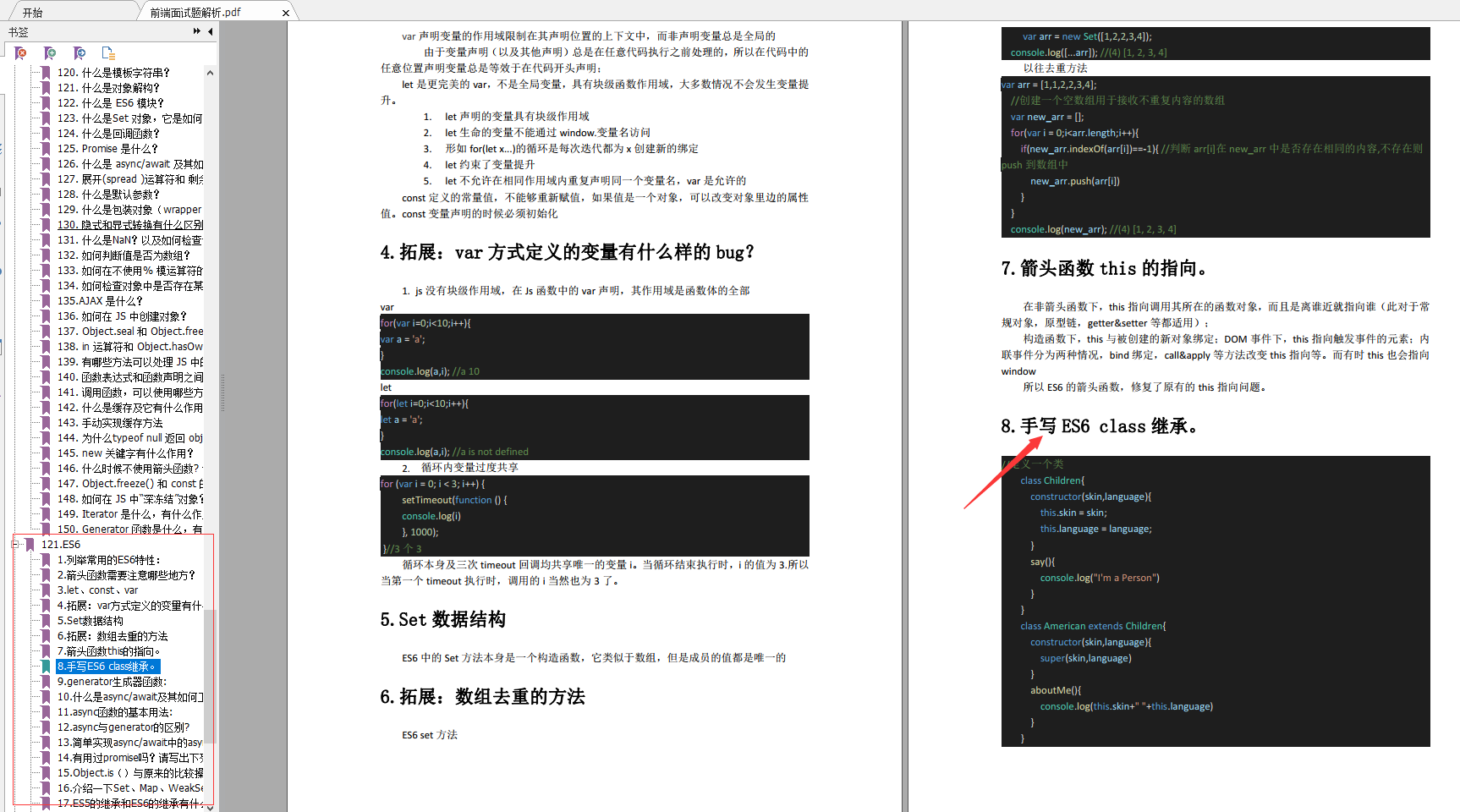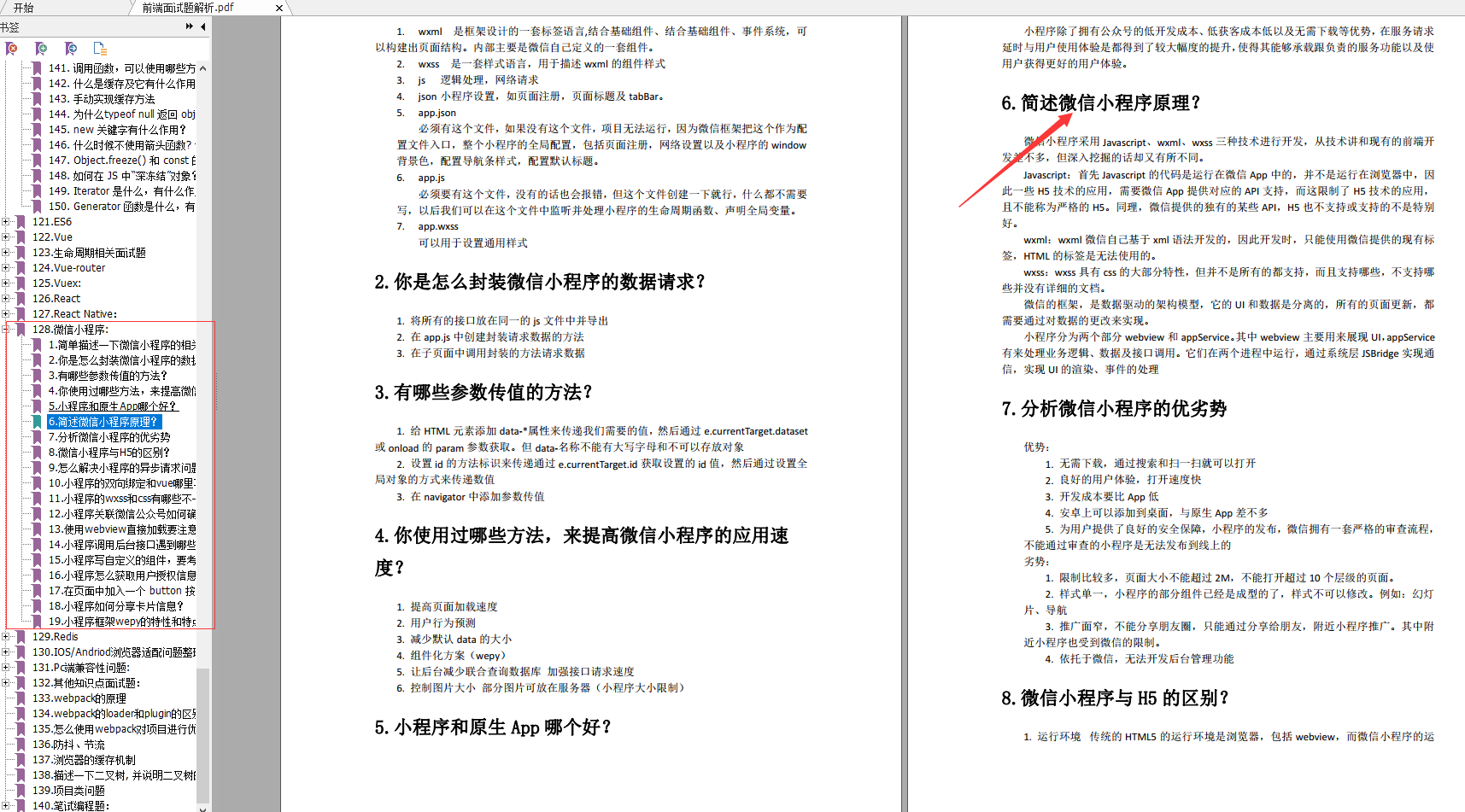age: number
}
// type IObj = {name:string,age:number} | string;
const getObj = (obj: IObj) => { }
getObj({ name: ‘zf’, age: 12 });
// 2) 描述函数类型
interface ISum {
(a: string, b: string): string
}
// type ISum = (a:string,b:string)=>string
const sum: ISum = (a, b) => {
return a + b;
}
// 3) 我希望写个计数器的例子 每次调用函数就累加1
interface ICount { // 接口中的混合类型
(): number
count: number
}
const fn: ICount = (() => { // 函数返回函数 我一般要标识函数的返回类型
return ++fn.count;
}) as ICount
fn.count = 0;
// interface IEffect {
// ():void,
// id:number
// }
// function effect(fn:Function){
// const reactiveEffect = createReactiveEffect(fn);
// return reactiveEffect
// }
// function createReactiveEffect(fn:Function):IEffect{
// const effect:IEffect = function reactiveEffect(){
// }
// effect.id = 1;
// return effect
// }
// 4) 接口的特性
// interface IVegetables {
// color:string,
// taste:string
// }
// 1 直接断言,断言后可以直接使用 (要保证接口中限制的数据必须要有)
// const tomato:IVegetables = {
// color:‘red’,
// taste:‘sweet’,
// size:‘big’
// } as IVegetables
// 可能我的代码里 用不到这个size , 还要手动删掉?
// 2) 接口的合并 接口同名会合并,会改变原有的接口
// interface IVegetables {
// size:string
// }
// const tomato:IVegetables = {
// color:‘red’,
// taste:‘sweet’,
// size:‘big’
// }
// 3) 我单独写一个tomato接口 继承蔬菜接口
// interface ITomato extends IVegetables{ // 接口的继承 ts里面的
// size:string
// }
// const tomato:ITomato = {
// color:‘red’,
// taste:‘sweet’,
// size:‘big’
// }
// 4) 可选属性 可以通过? 来实现
interface IVegetables {
color: string,
taste: string,
[key: string]: any // 任意接口 可多填
// size?:string // 函数的参数
// id?:number
}
const tomato: IVegetables = {
color: ‘red’,
taste: ‘sweet’,
}
// 5) 可索引接口
interface ILikeArray {
}
let arr: ILikeArray = [1, 2, 3]
let arr1: ILikeArray = { 1: 1, 2: 2 };
// 把一个对象赋值给一个接口,要满足接口中的所有属性
// 如果多出来的属性 可以采用 断言 、 可选、 任意接口
// 接口中的类型 可以通过类型别名的方式拿出来 , 但是只能用[]
// 嵌套的情况
// type MyType = {key:string,value:string}
// interface XXX {
// n:MyType[]
// }
// interface IArr {
// arr:MyType[],
// a:XXX
// }
// type My = IArr[‘a’][‘n’]
// 6) 接口实现 接口可以被类来实现 , 接口中的方法都是抽象(没有具体实现)的
interface ISpeakable {
name: string,
// 用接口来形容类的时候 void 表示不关心返回值
speak(): void // 描述当前实例上的方法,或者原型的方法
}
interface IChineseSpeakable {
speakChinese(): void
}
class Speak implements ISpeakable, IChineseSpeakable { // 剋本身需要实现接口中的方法
speakChinese(): void {
throw new Error(“Method not implemented.”);
}
name!: string
speak(): string { // 此方法是原型方法
return ‘xxx’
}
}
let s = new Speak()
// 7.抽象类 不能被new, 可以被继承
abstract class Animal { // 只有类被标记成abstract 属性在可以描述成abstract的
abstract name: string// 没有具体实现,需要子类实现
eat() {
console.log(‘eat’)
}
abstract drink(): void
}
class Cat extends Animal {
drink(): void {
console.log(‘Method not implemented’)
}
name: string = ‘a’
}
// abstract(可以放置具体的实现) interface (只能放一些抽象的属性和方法 不能有具体实现)
// 8.可以用接口来描述实例
// 单例模式
// let instance: Person;
// type IPerson = new (name:string)=>Person 描述的是构造函数类型
interface IPerson {
new(name: string): T
}
function createInstance(clazz: IPerson, name: string) {
// if (instance) return instance;
return new clazz(name)
}
ES6
-
列举常用的ES6特性:
-
箭头函数需要注意哪些地方?
-
let、const、var
-
拓展:var方式定义的变量有什么样的bug?
-
Set数据结构
-
拓展:数组去重的方法
-
箭头函数this的指向。
-
手写ES6 class继承。

微信小程序
-
简单描述一下微信小程序的相关文件类型?
-
你是怎么封装微信小程序的数据请求?
-
有哪些参数传值的方法?
-
你使用过哪些方法,来提高微信小程序的应用速度?
-
小程序和原生App哪个好?
-
简述微信小程序原理?
-
分析微信小程序的优劣势
-
怎么解决小程序的异步请求问题?






















 1147
1147

 被折叠的 条评论
为什么被折叠?
被折叠的 条评论
为什么被折叠?








